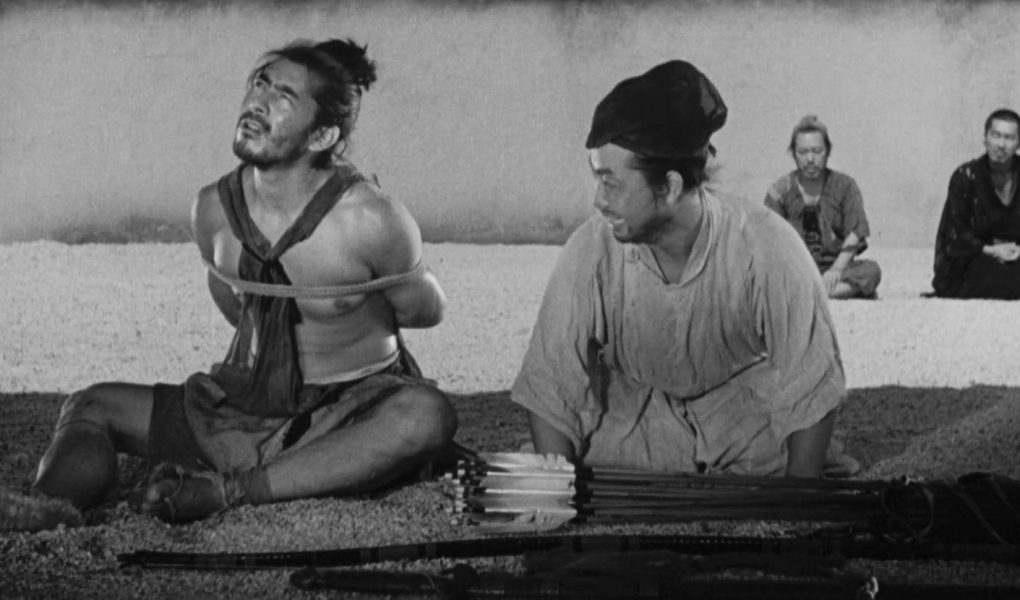iwillnotbebroken.org – Rashomon (1950), directed by Akira Kurosawa, is a film that reshaped the way stories are told in cinema. With its innovative narrative structure and exploration of subjective truth, the film challenged traditional storytelling conventions and opened the door for new possibilities in cinematic expression. Known for its complexity and deep philosophical themes, Rashomon remains one of the most influential films in the history of world cinema, earning Kurosawa an international reputation and contributing to the global rise of Japanese cinema.
Plot Overview: A Story of Multiple Perspectives
Set in feudal Japan, Rashomon revolves around the aftermath of a brutal crime: the murder of a samurai and the rape of his wife. The film presents the event through the conflicting testimonies of four individuals—the samurai’s wife, a bandit, the samurai (through a medium), and a woodcutter—each offering a different version of the truth. As the narratives unfold, the audience is left to question which, if any, of the accounts is the true one.
The film’s narrative structure is what sets it apart. Rather than presenting a single, coherent story, Rashomon emphasizes the elusiveness of truth. Each of the four perspectives reveals differing motivations, biases, and personal truths, forcing viewers to confront the complexity of human nature and the unreliability of memory and perception.
The Exploration of Truth and Subjectivity
At the heart of Rashomon lies an exploration of truth and its inherent subjectivity. The film presents a world where truth is not fixed but fragmented, shaped by the perspectives of those who experience and interpret it. This theme is encapsulated in the film’s title, which refers to the Rashomon Gate in Kyoto, where much of the story takes place and symbolizes the entrance to the confusion and ambiguity that pervades the film.
Each character’s testimony about the crime is influenced by personal desires, fear, and self-preservation. The samurai’s wife, for instance, presents a version of the events that paints her as both a victim and a perpetrator, while the bandit’s account is one of exaggerated heroism. The woodcutter’s version, initially presented as objective, is eventually revealed to be more morally complex. Through these varied perspectives, Kurosawa challenges the notion of an objective truth and raises questions about the nature of justice and human experience.
Cinematic Innovation and Style
Beyond its narrative structure, Rashomon is also notable for its visual innovation. Cinematographer Kazuo Miyagawa’s use of light and shadow, particularly in the film’s iconic scenes set in the forest, enhances the film’s mood and its thematic exploration of ambiguity. The stark contrasts between light and darkness not only highlight the emotional states of the characters but also symbolize the moral and psychological murkiness of the story.
Kurosawa’s use of the camera is equally groundbreaking. The film’s innovative framing and dynamic movement, especially during moments of heightened tension, brought a new sense of visual energy to Japanese cinema. The use of weather, particularly rain, plays a significant role in the film’s atmosphere, amplifying the sense of confusion and chaos that pervades the story.
Impact on Cinema and Culture
Rashomon had a profound impact on both Japanese and international cinema. It was one of the first films to achieve significant success outside of Japan, winning the Golden Lion at the Venice Film Festival in 1951. This recognition helped introduce Japanese cinema to a global audience and solidified Akira Kurosawa’s status as a master filmmaker.
The film’s influence can be seen in the works of directors such as François Truffaut, Orson Welles, and Ingmar Bergman, all of whom admired Kurosawa’s ability to blend philosophical depth with cinematic artistry. Rashomon also paved the way for films that explore subjective reality, including later works such as The Usual Suspects (1995) and Memento (2000).
The term “Rashomon effect” has since entered popular discourse, referring to situations in which different people have contradictory interpretations of the same event, a concept that has become central to discussions of memory, truth, and perception in both academic and cinematic circles.
Conclusion: A Timeless Masterpiece
Rashomon is not just a pioneering work of cinema; it is a profound meditation on the nature of truth, morality, and human consciousness. Through its inventive storytelling and philosophical depth, the film continues to resonate with audiences around the world. Its impact on the language of cinema remains immeasurable, making it a cornerstone of world cinema and a work that continues to challenge, inspire, and provoke thought long after its release.




